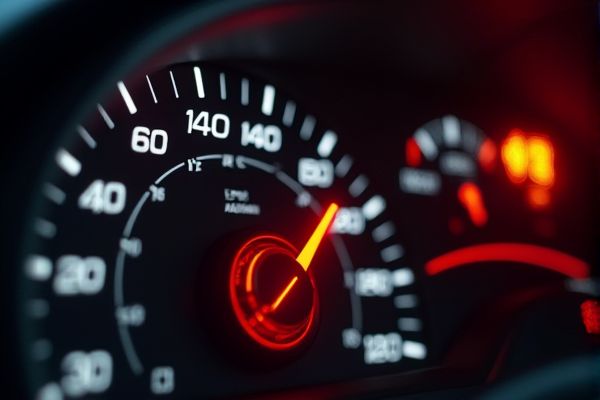
When the Daewoo Lanos check engine light comes on, it signals that the onboard diagnostic system has identified an issue, often linked to emission control, sensor malfunctions, or engine performance anomalies. Data obtained via an OBD-II scan--such as specific trouble codes--prioritizes potential faults (e.g., oxygen sensor failure or catalytic converter problems) and guides precise, timely repairs to maintain optimal engine functionality.
Daewoo Lanos check engine light on meaning
Camshaft Position Sensor Issues
Problems with the camshaft position sensor can cause the check engine light to illuminate, often due to faulty wiring or sensor failure.
Cylinder Misfires
Misfires in cylinders, such as P0304, can trigger the check engine light, especially under heavy load conditions.
IAT Sensor Circuit High Input
Issues with the Intake Air Temperature (IAT) sensor circuit can lead to check engine light problems.
PCM/ECM A/D Conversion Error
Errors in the Powertrain Control Module (PCM) or Engine Control Module (ECM) can cause the check engine light to appear.
Fuel System Issues
Problems with fuel injectors, fuel pumps, and fuel filters can lead to engine performance issues and trigger the check engine light.
For car users
When your Daewoo Lanos check engine light comes on, safely pull over and immediately check vital factors such as engine oil and coolant levels while noting any unusual sounds or smells. Then, prioritize contacting a trusted mechanic or service center for a full diagnostic to accurately identify and resolve the underlying issue, ensuring your safety and preventing further damage.
Ignoring the check engine light
Ignoring the Daewoo Lanos check engine light can lead to worsened engine issues--sensor failures, misfires, or exhaust problems--that may deteriorate fuel efficiency and escalate repair costs over time. Immediate diagnostics and prompt repairs are essential to maintain optimal performance, avoid further engine damage, and ensure driving safety while complying with emission standards.
How to reset?
Connect an OBD-II scanner to the Daewoo Lanos' diagnostic port, retrieve fault codes to identify and address underlying issues, then clear the codes to reset the check engine light. Alternatively, disconnect the battery for about 15 minutes to force a system reset, but ensure repairs are made to prevent the light from reactivating.
Data indicates that the estimated repair cost for a Daewoo Lanos with the check engine light on typically ranges from about $100 for minor sensor issues to around $500 if more extensive repairs--such as catalytic converter or engine management system fixes--are required. Prioritizing diagnostic precision, the first step is a thorough OBD-II scan to pinpoint the fault code, which directs whether labor and parts will lean toward the lower or higher end of this estimated range.
Future prevention
Regularly scheduled maintenance is essential--ensure that key components such as oxygen sensors, fuel injectors, EVAP systems, and the gas cap are inspected and replaced or tightened as needed to reduce unexpected errors. Using an OBD-II scanner for early detection and prompt targeted repairs will further prevent issues that could trigger the Daewoo Lanos check engine light and maintain peak engine performance.
